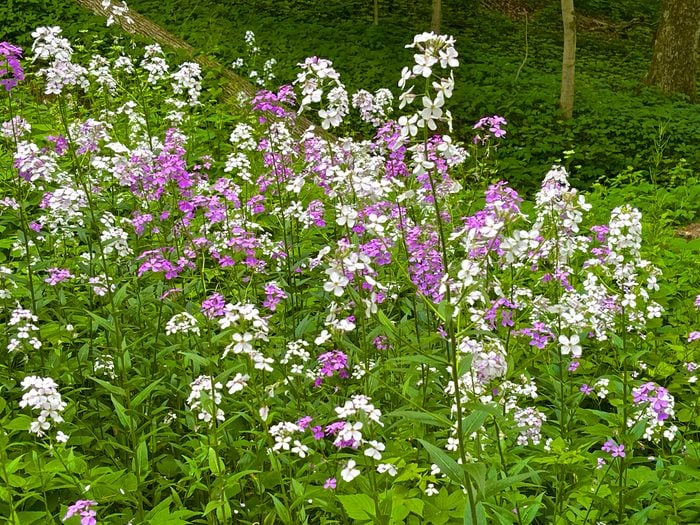
Avoid Growing These Invasive Flowers
It’s hard to fault a plant for growing and spreading (that’s what plants do, after all!), but invasive flowers are another story. Nothing strikes more fear in a gardener’s heart than discovering that the gorgeous plant they incorporated into their landscape last year is now taking over and refuses to be evicted. Not only will these aggressive plants crowd out the rest of your garden and spoil what you’ve worked so hard on, they can have devastating effects on local wildlife.
Besides the six invasive flowers listed below, you should also avoid planting wildflower seed mixes, which can include harmful plant species. If you’re not sure if a new-to-you flower is invasive or not, go online.
The Invasive Plant Atlas of the United States (invasiveplantatlas.org) and the United States Department of Agriculture Plant Database (plants.usda.gov) are two good options for invasive flower research. Or check to see if you have a local master gardener program or botanical chapter in your area.
Check out the worst invasive plants you should never grow.
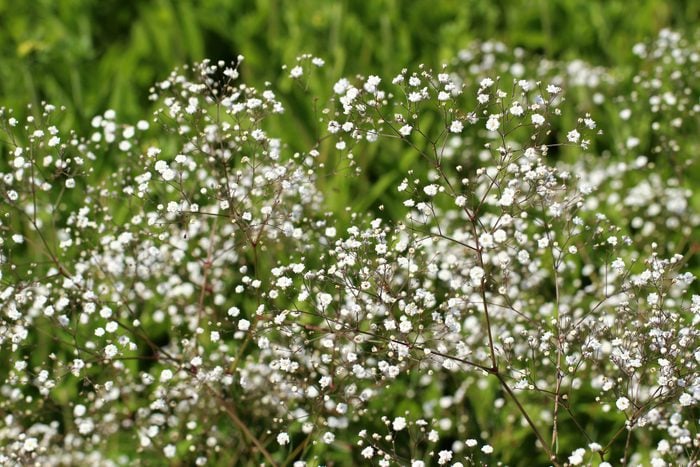
Baby’s Breath
Gypsophila paniculata
Although it has a cute name and delicately white flowers that bloom in loose clusters in July and August, baby’s breath is a perennial herb originally from Eastern Europe and considered invasive. During wedding season, you’ll find it in plenty of bouquets and corsages. It’s a popular filler flower in ornamental gardens.
Baby’s breath isn’t always a problem, but it’s particularly invasive in sandy dunes along the Great Lakes where it stabilizes the soil and prevents native plants, like pitcher’s thistle, from gaining a foothold. A single baby’s breath plant can spread 14,000 seeds!
Instead Try: Heath aster or flowering spurge
Discover the best natural way to kill weeds.
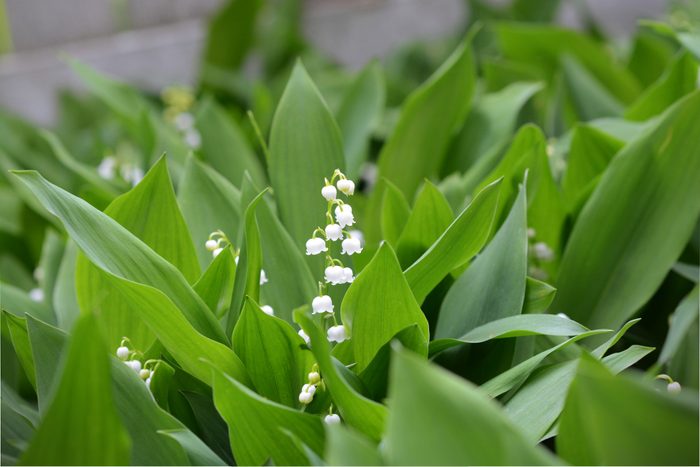
Lily-of-the-Valley
Convallaria majalis
Lily-of-the-valley is an invasive flower that spreads slow and steady via its root system. What makes it great as a ground cover plant (it’s low-maintenance, does well in shade and often thrives where other plants fail), also makes it a formidable invader as it grows past its flower bed or border.
You’ll recognize lily-of-the-valley by its tiny, bell-shaped blossoms and sweet scent. All parts of this plant are poisonous, so wear gloves if you choose to grab a spade and go to war with lily-of-the-valley.
Instead Try: Bunchberry or starry false lily-of-the-valley
Replace invasive flowers with the top 10 easy-to-grow native plants.
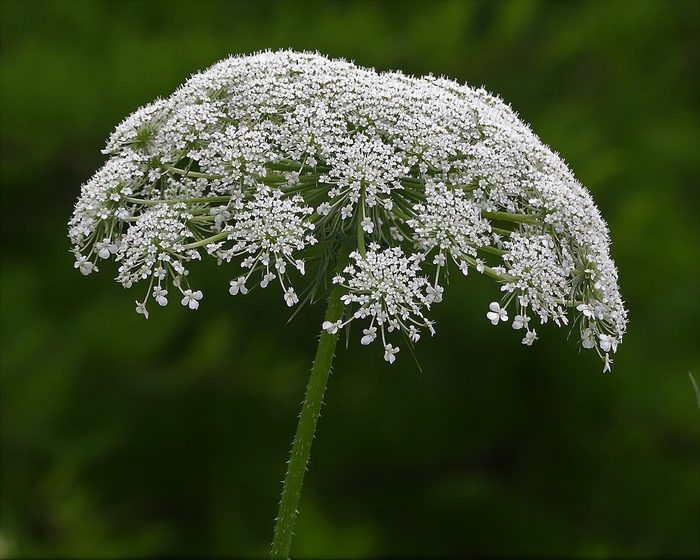
Queen Anne’s Lace
Daucus carota
The colonists brought Queen Anne’s Lace to North America where the wind quickly spread seeds across fields, meadows and pastures. A member of the Parsley family, there are a lot of legends about how this invasive plant got its name, including one story about a lace-making contest by Queen Anne II. (She challenged her ladies-in-waiting to make a lace as dainty and intricate as the white bunches of blooms of Queen Anne’s Lace.)
Look closely at its bloom clusters, and you’ll usually see a small dark purple flower at the center of each one.
Instead Try: Milk parsley or bishop’s flower
Learn how to remove invasive plant species for good.
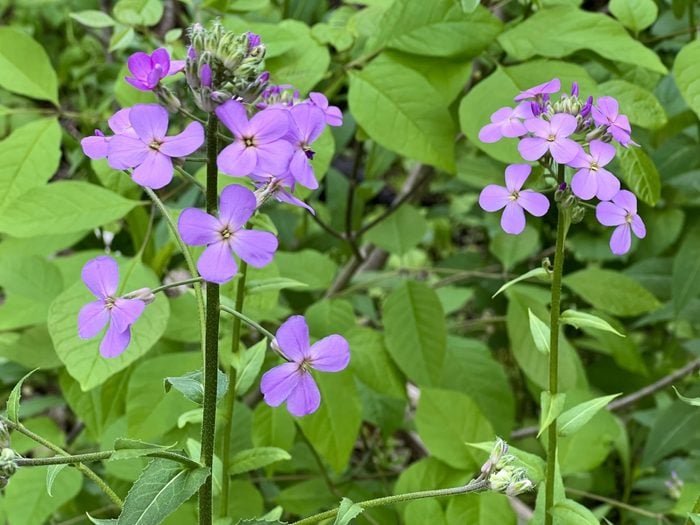
Dame’s Rocket
Hesperis matronalis
It’s easy to mix-up the white, pink, and purple flowering stalks of dame’s rocket with other native flowers, like blue or woodland phlox. (Spot the difference by counting the flower petals. Phlox has five, but Dame’s Rocket has four.)
It spreads via seed and is invasive across North America. Gardeners sometimes end up introducing dame’s rocket without meaning to, because it’s regularly included in wildflower seed mixes.
Instead Try: Fireweed or rocky mountain penstemon
Never plant these invasive shrubs.
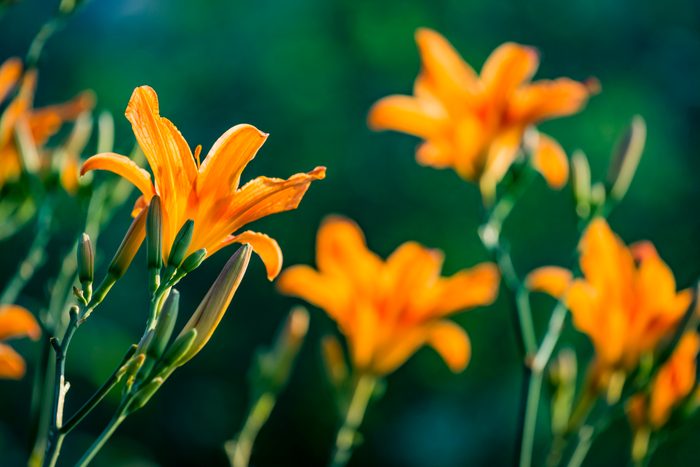
Orange Daylily
Hemerocallis fulva
Daylilies, particularly orange daylilies, are common along roadsides (hence, their nickname “ditch weeds”) and a popular enough plant that it’s almost hard to believe they’re not native. (In fact, all daylilies originate from Asia.)
Despite their common name, they’re not true lilies. You can easily tell by comparing the multiple-stemmed daylily to the single-stemmed true lily. Also unlike lilies, daylilies spread through their tuberous roots and once they’ve made a home in your garden, they’re incredibly hard to get rid of.
Instead Try: Butterfly weed or wood lily
Is honeyvine milkweed an invasive plant?
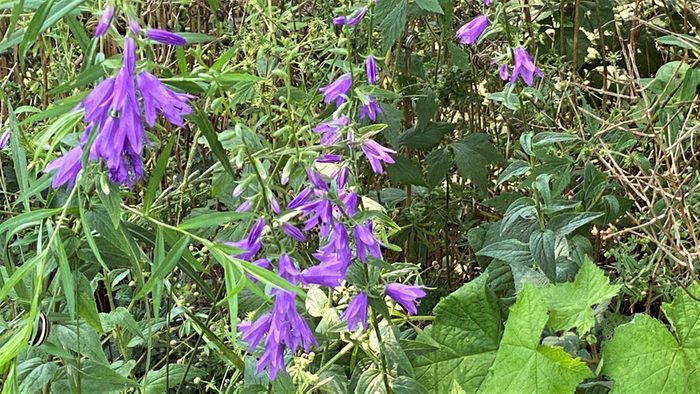
Creeping Bellflower
Campanula rapunculoides
Introduced from Eurasia as a pretty choice for ornamental gardens, the creeping bellflower quickly snuck out of gardens. It can now be found in grasslands, fields, roadsides, woods and more. Spot it by the purple, bell-shaped flowers that grow along one side of its stem. Once its creeping roots make its way through soil, it’s difficult to eradicate. This invasive plant is considered a “noxious weed” for a reason.
To expunge creeping bellflower from your yard, dig up the plant and remove the long, slender underground rhizomes and roots that can be 6 to 9 inches deep. Any root fragments that remain can produce new plants. It often takes persistence and several years to eliminate this plant from a garden.
Instead Try: Northern bluebells or Virginia bluebells
Next, learn how to stop bindweed from taking over your garden.
